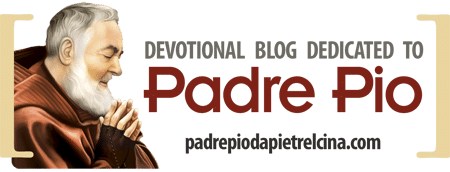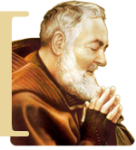The Church of Saint Mary of the Angels (Chiesa di Santa Maria degli Angeli) in Pietrelcina, where Padre Pio celebrated his first Mass, became a profound center of spirituality and mystical union with God. Within its sacred walls, the saint experienced ecstasies and the fusion of hearts with Jesus, transforming the church into a sanctuary of prayer and divine grace.
The Church of Saint Mary of the Angels
The Church of Saint Mary of the Angels, located in the heart of Pietrelcina, is a place that deeply marked Padre Pio’s ministry, as he celebrated his first Mass here. With its neoclassical style, the church stands as a true gem of spirituality. Rebuilt after the 1688 earthquake, it was consecrated by Cardinal Orsini in 1701. Later, the Church of Saint Mary of the Angels was expanded and modified, taking on its current appearance with a bell tower with a clock. At the top of the bell tower is a rooster, 60 cm in size, made in 1892 by the master coppersmith Abele Mandato. Inside, enveloped in an atmosphere of reflection and devotion, there is a polychrome wooden statue in the Neapolitan style from the late 17th century. The statue depicts the Madonna della Libera, the patroness of Pietrelcina, whom Padre Pio affectionately called “la Madonnella nostra” (our little Madonna).

A Door That Tells a Story of Holiness
In 2000, the church’s façade was enhanced with a striking bronze door, crafted with eight panels that depict key moments from Padre Pio’s life. This feature turns the church into more than a place of prayer—it becomes a space of remembrance, where each architectural and artistic detail narrates the story of the saint.
The First Mass and the Path of Priesthood
On August 14, 1910, just four days after his ordination, Padre Pio celebrated his first Mass in the Church of Saint Mary of the Angels (Chiesa di Santa Maria degli Angeli). It was a moment of profound grace and contemplation, marking the beginning of his priestly mission. Over the years, he spent countless hours within these walls, absorbed in silence and prayer. In this church, Padre Pio spent countless moments in prayer and intimate communion with God. He experienced ecstasy at the foot of the altar and the mystical phenomenon of the merging of hearts: “The heart of Jesus and mine, allow me to say, were no longer two hearts beating, but one. My heart had disappeared, like a drop of water lost in the sea.” And he also said: “I feel all of me burning without fire… a thousand flames consume me, I feel like I’m dying continuously and yet I am still alive.” For him, the church became a spiritual refuge, where each prayer seemed to dissolve into the profound mystery of God’s presence.






